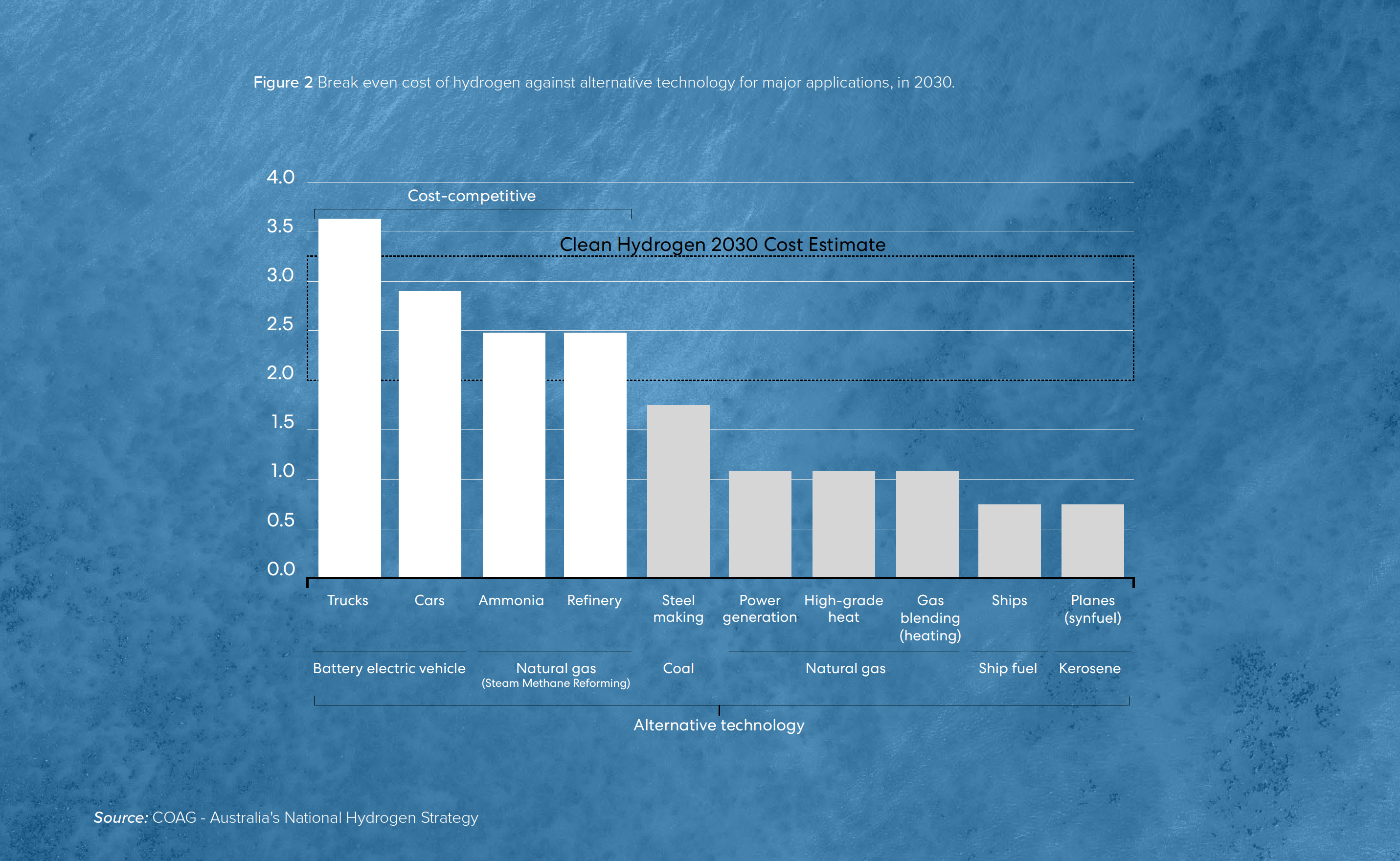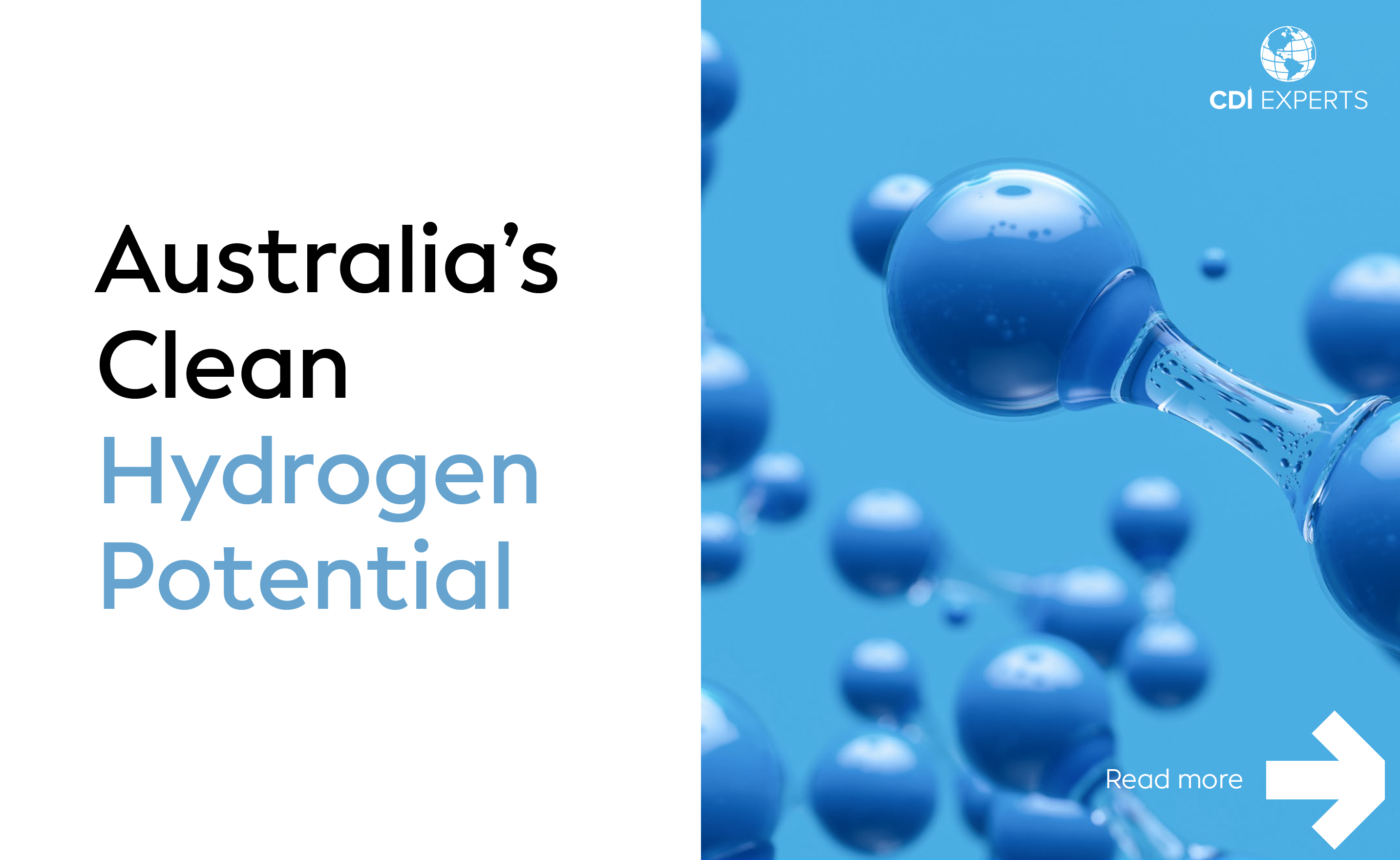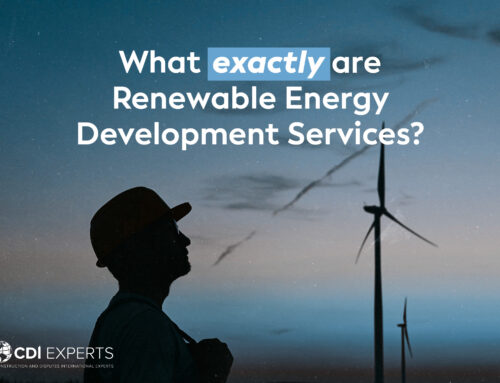Commonwealth of Australia. Australia’s National Hydrogen Strategy
Published
15 Nov 2023
A global transformation of the energy sector is underway. To support a future where all our energy comes from clean sources, the world needs clean, flexible, storable and safe fuels. Hydrogen has all of these characteristics. When used as a fuel, it produces no carbon emissions, only water. It can be safely used in a broad range of applications. Energy markets across the globe are undergoing substantial change, driven by the need to reduce carbon emissions while meeting growing demand for energy.
The falling cost of new energy technologies is aiding the change. The result will transform the ways energy is produced and used. We are already seeing unprecedented growth in low-emissions electricity generation. However, in other energy-consuming sectors, such as heavy transport, heavy industry and providing heat, the journey to clean energy is less advanced. So what really is Australia’s hydrogen potential?
A fuel for the 21st century
Hydrogen is a flexible, safe, transportable and storable fuel, used to power vehicles & generate heat and electricity. When used as a fuel, hydrogen’s only by-product is water. There are no carbon emissions. But whether hydrogen is truly a zero or low-emissions fuel depends on how it is produced. Pure hydrogen is not found naturally on Earth. It must be extracted from the substances that contain it – water mainly, but also coal, natural gas and biomass – & this takes energy. Because of this, hydrogen is better thought of as an energy carrier than energy source.
Hydrogen can be used, like natural gas, to heat homes and industry. Delivery of hydrogen for these uses would most likely be via new or existing gas networks. Hydrogen can also be blended with natural gas for heating & cooking. Hydrogen can power fuel cell electric cars, trucks, buses and trains. The advantages of hydrogen powered vehicles compared to battery electric vehicles are faster re-fueling times and the ability to travel longer distances carrying larger loads before re-fueling. Re-fueling hydrogen vehicles requires a network of re-fueling stations, similar to what exists for petrol and diesel.

Global momentum for clean hydrogen
A global transformation of the energy sector is underway. To support a future where all our energy comes from clean sources, the world needs clean, flexible, storable and safe fuels. Hydrogen has all of these characteristics. When used as a fuel, it produces no carbon emissions, only water. It can be safely used in a broad range of applications.
Energy markets across the globe are undergoing substantial change, driven by the need to reduce carbon emissions while meeting growing demand for energy. The falling cost of new energy technologies is aiding the change. The result will transform the ways energy is produced and used. We are already seeing unprecedented growth in low-emissions electricity generation. However, in other energy-consuming sectors, such as heavy transport, heavy industry and providing heat, the journey to clean energy is less advanced.

Global strategies support hydrogen’s future
The Future Fuels Cooperate Research Centre (CRC) has identified key points for clean hydrogen plans:
» The drive to reduce carbon emissions has led to considerable interest in rapidly deploying hydrogen technologies over the next several decades.
» This could give rise to export opportunities for countries with a comparative advantage in producing hydrogen. » There is uncertainty about how quickly costs will drop and efficiencies improve for hydrogen and competing technologies.
» Only a few countries are focusing on producing hydrogen, while many are focusing on using hydrogen.
» The core focus of new strategies should reflect the broader international environment, address barriers, and build on comparative advantages.
» The timing and scale of activities should reflect the transition to hydrogen and how it can be practically achieved.
» Access to low-cost and low-emissions electricity is likely to be critical to hydrogen export trade in the medium term, along with the availability of carbon capture and storage.
» International producers and users of hydrogen will need to collaborate on standards, technology and hydrogen certification.
Water for hydrogen production
A global transformation of the energy sector is underway. To support a future where all our energy comes from clean sources, the world needs clean, flexible, storable and safe fuels. Hydrogen has all of these characteristics. When used as a fuel, it produces no carbon emissions, only water. It can be safely used in a broad range of applications. Energy markets across the globe are undergoing substantial change, driven by the need to reduce carbon emissions while meeting growing demand for energy. The falling cost of new energy technologies is aiding the change. The result will transform the ways energy is produced and used. We are already seeing unprecedented growth in low-emissions electricity generation. However, in other energy-consuming sectors, such as heavy transport, heavy industry and providing heat, the journey to clean energy is
less advanced.

Capturing Australia’s clean hydrogen opportunity
The global interest in clean hydrogen presents a major opportunity for Australia. Australia has significant competitive advantages for developing a substantial hydrogen export industry. It has all the natural resources needed to make clean hydrogen. It has a track record in building large scale energy industries. It has an established reputation as a trusted energy supplier
to Asia.
Australia must be strategic to capture the hydrogen opportunity and be one of the world’s great energy players. The Australian Government has supported nine projects in the past two years alone. The state and territory governments have also made early moves through supporting specific projects and in some cases, releasing their own hydrogen strategies. These strategies allow them to prioritise action areas that make sense for their resources, needs and strengths. The purpose of the National Hydrogen Strategy is to coordinate all these actions and provide a strategic vision for Australia’s national hydrogen industry.
Follow us for more!
Get the expert edge
Please add your details below and we’ll be in touch as quickly as possible





